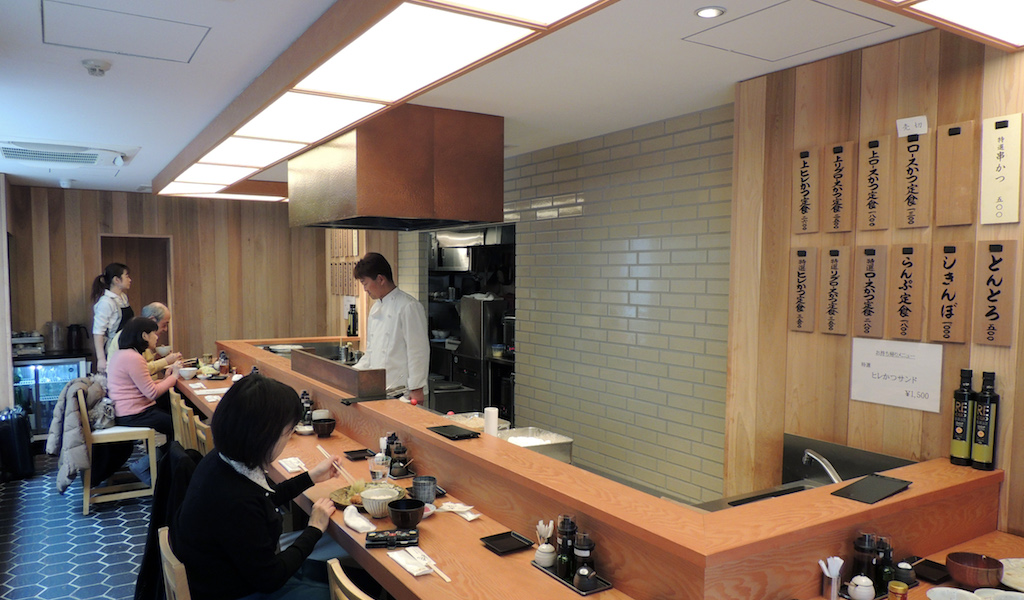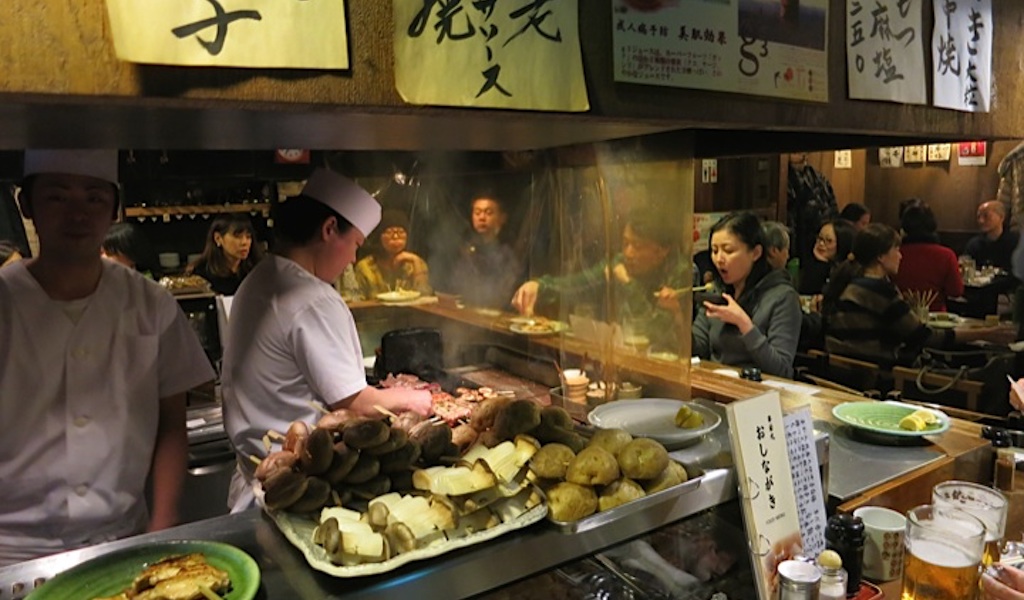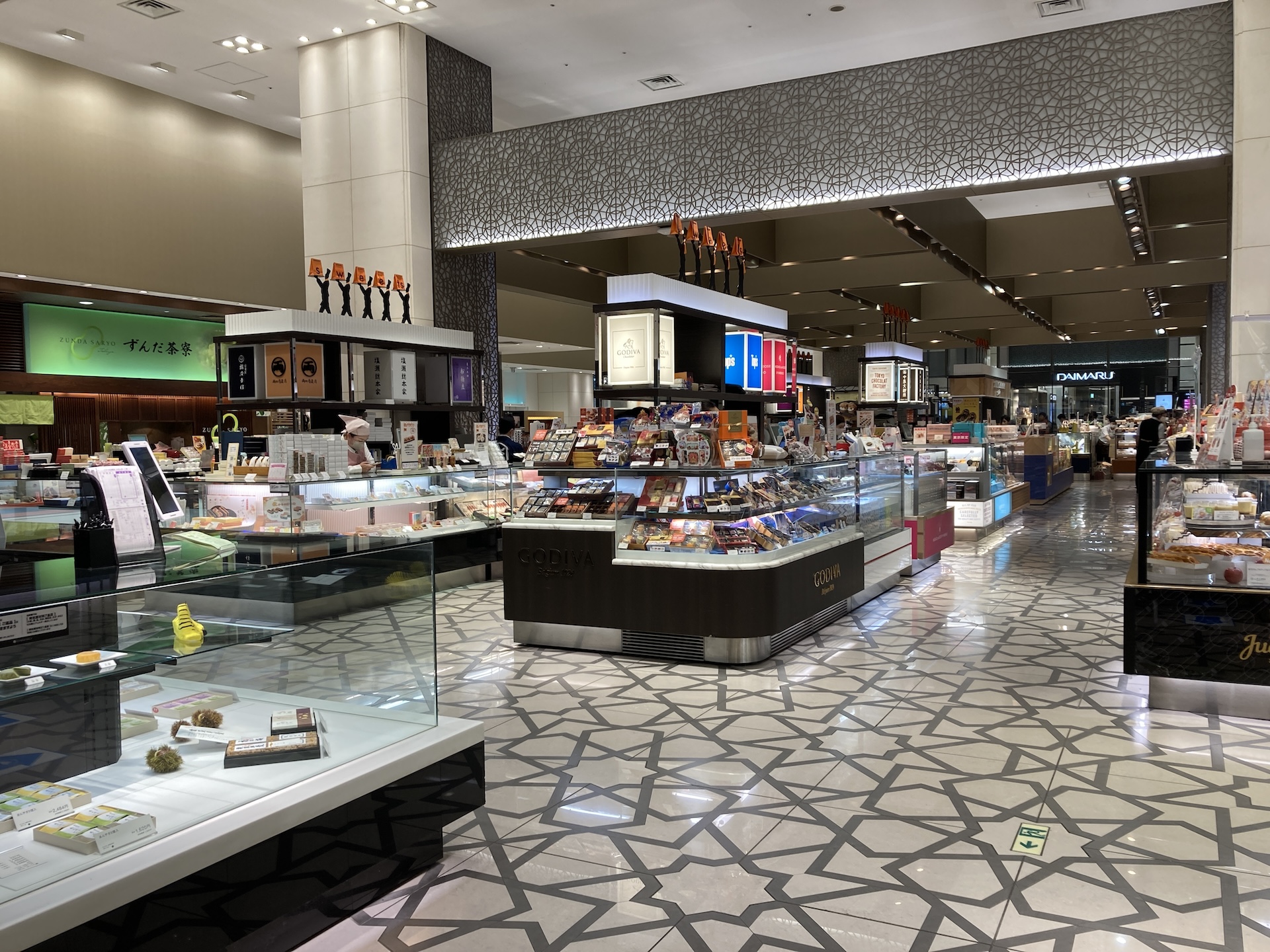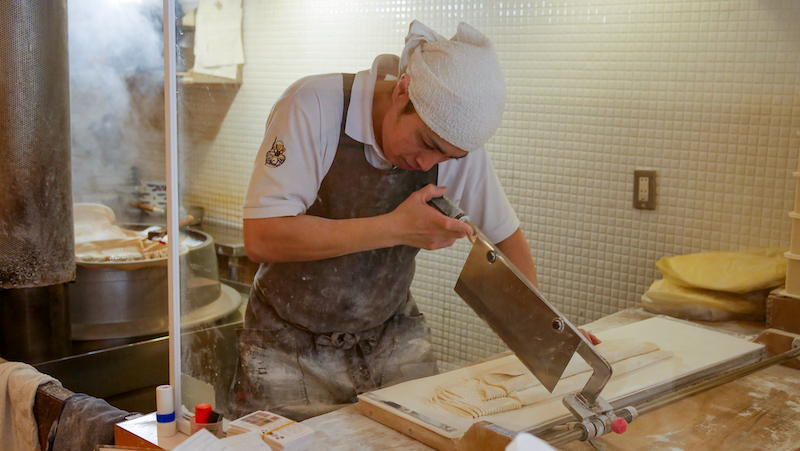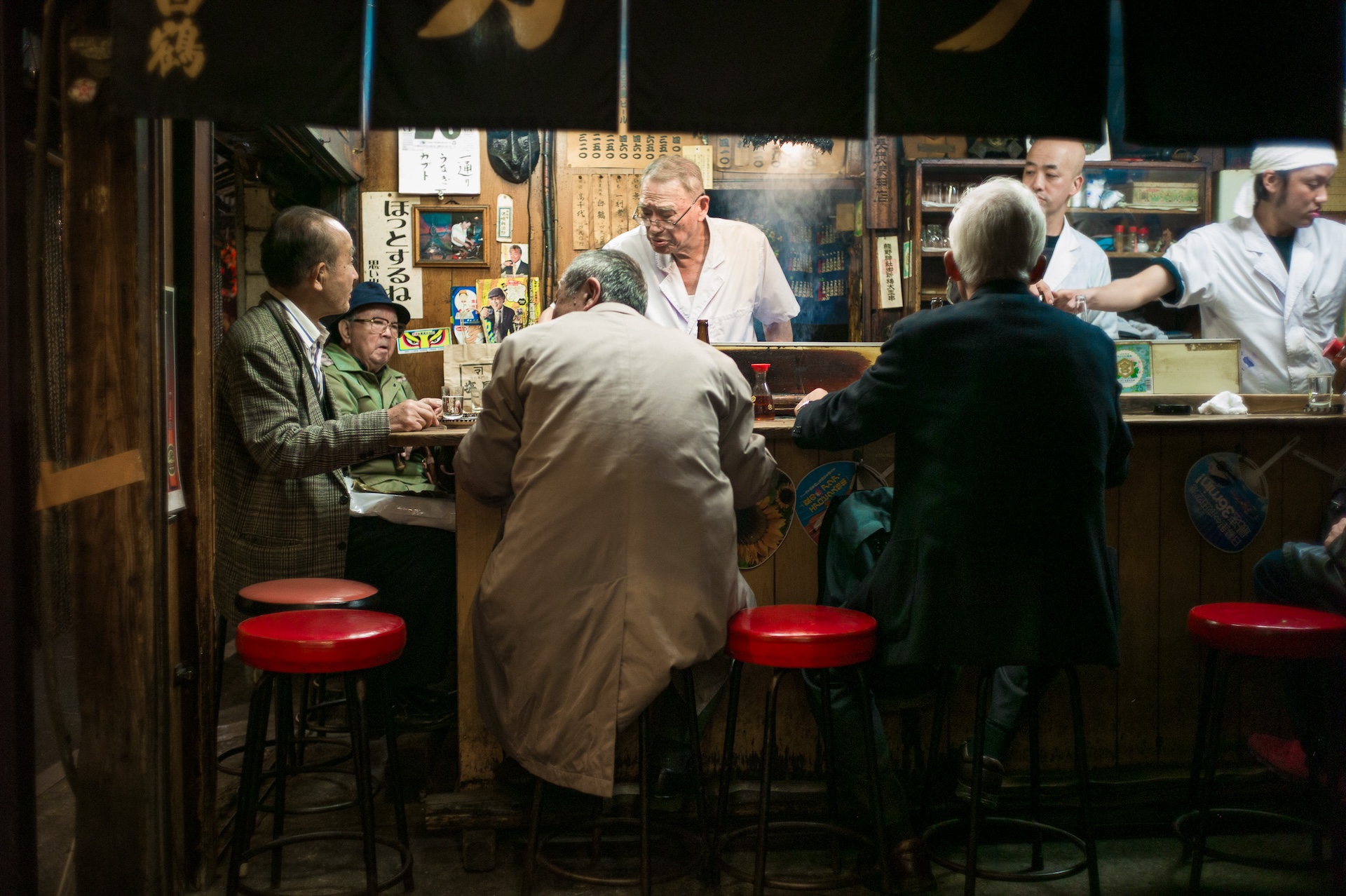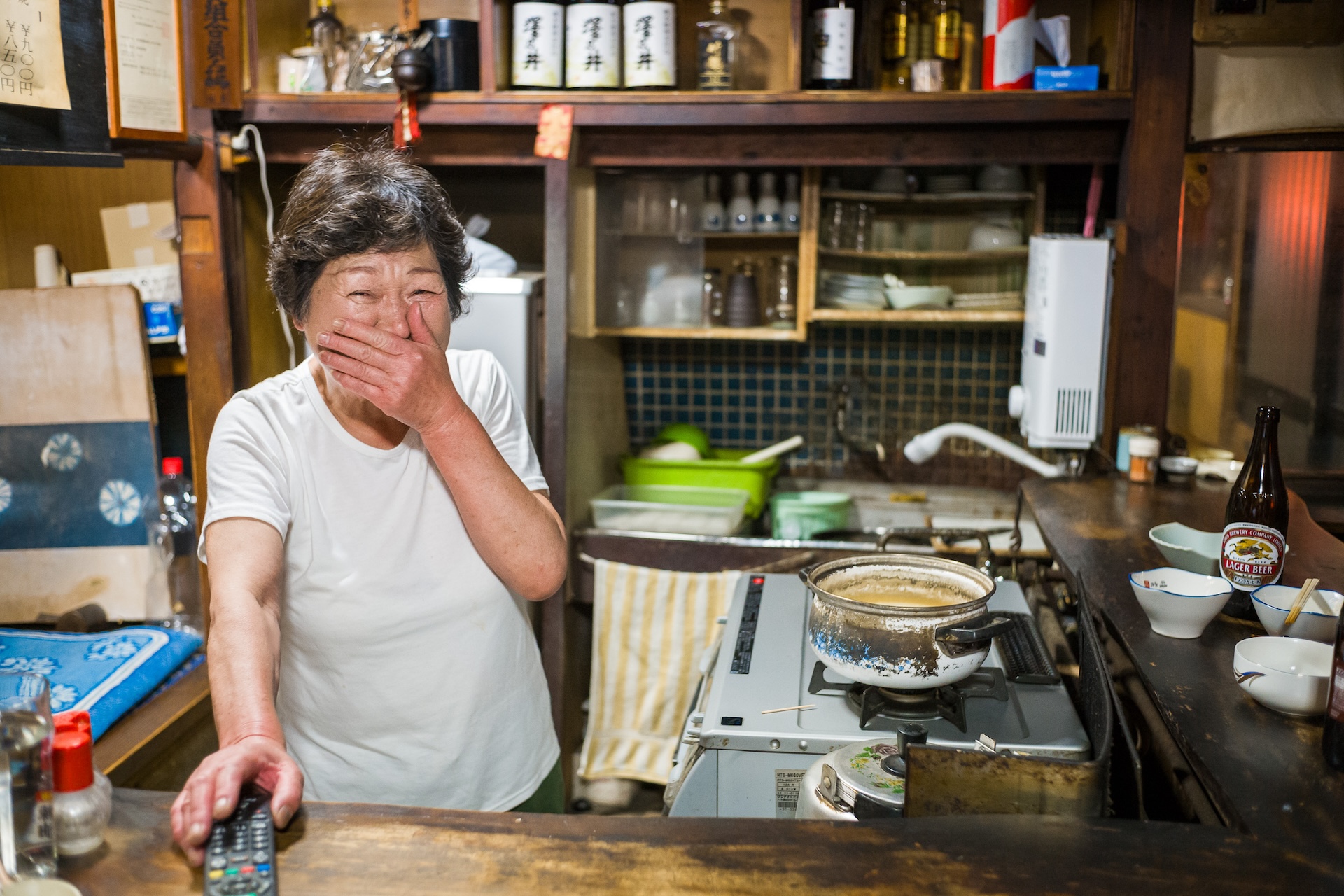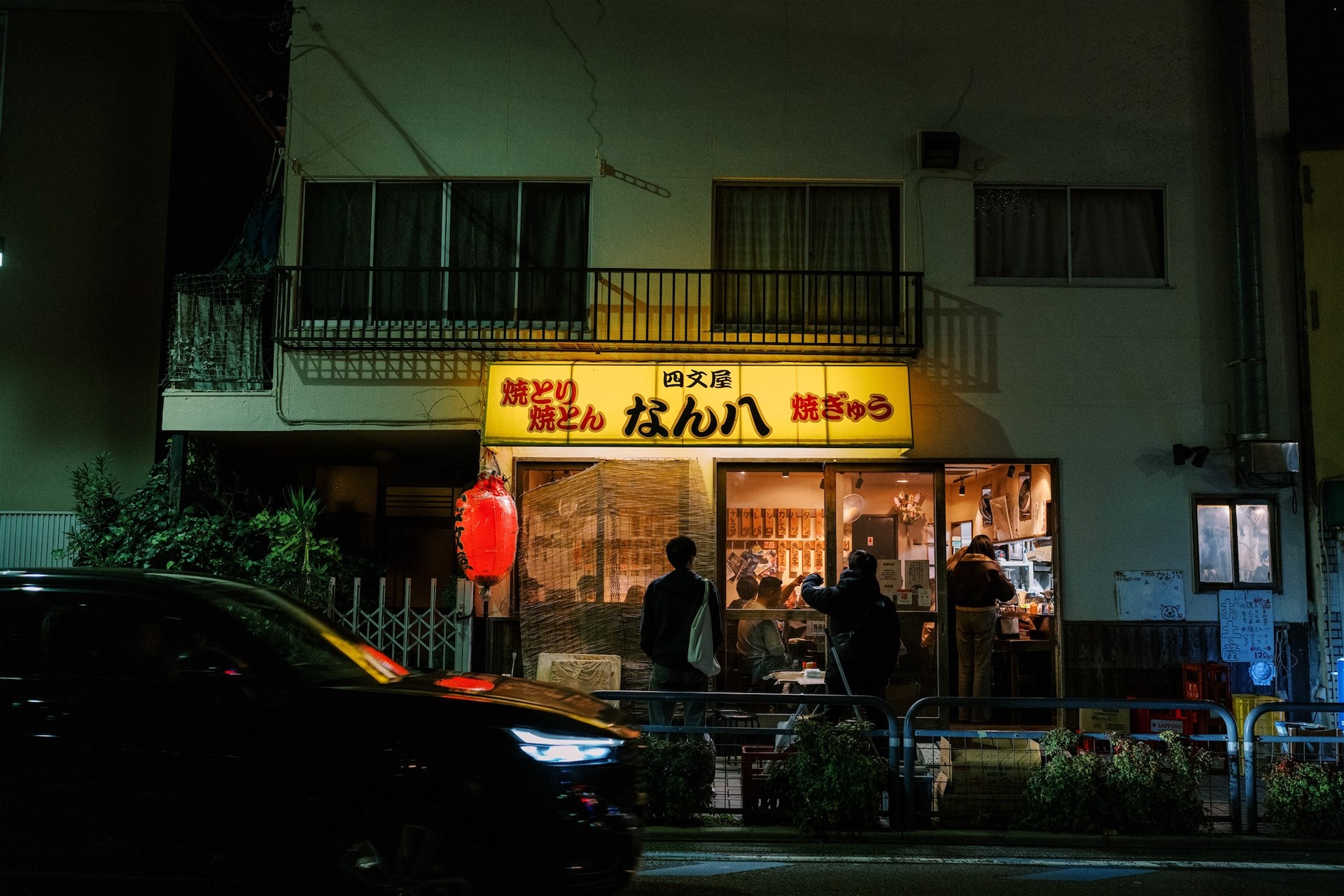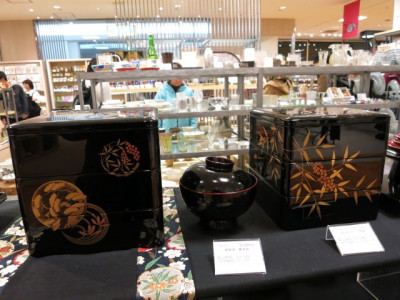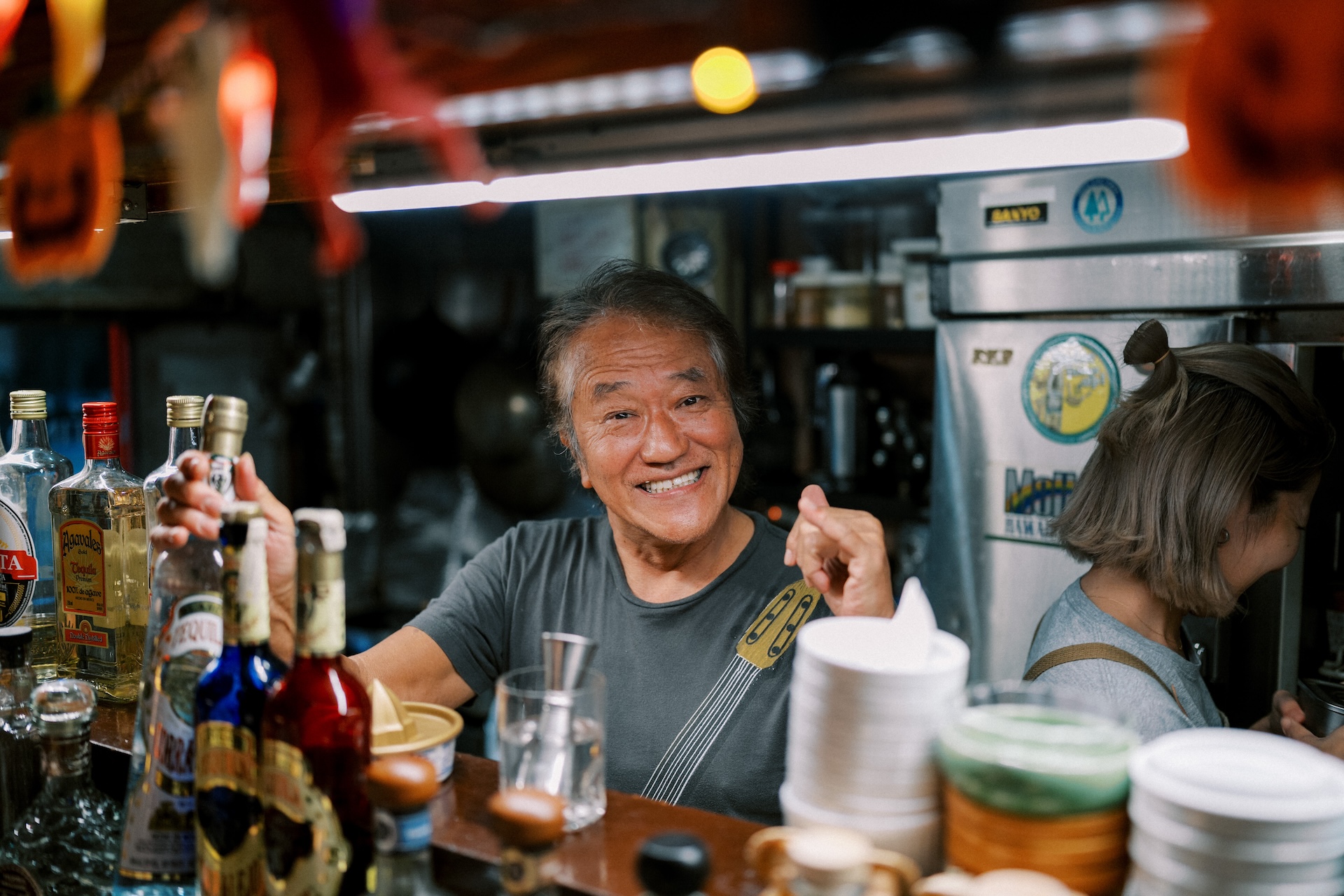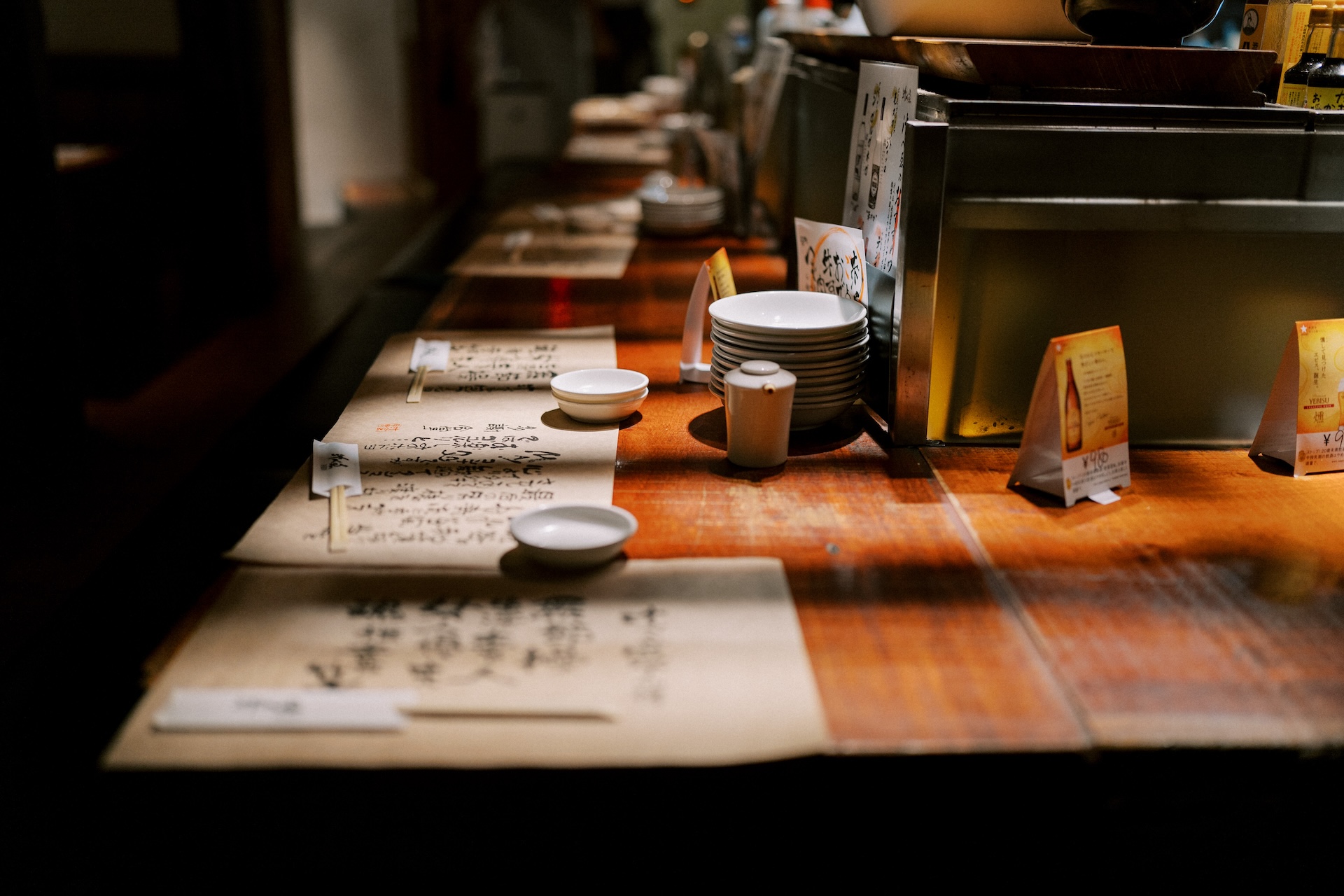We can't find the internet
Attempting to reconnect
Something went wrong!
Hang in there while we get back on track

Tokyo
Tokyo's culinary record
A metropolis of nearly 14 million people, Tokyo is unashamedly trendy and rapidly matches the taste of its modern urbanites. Acutely attuned to the dining scene in New York, it’s only ever a few paces behind importing the latest fashionable gastronomy. Indeed, the country has a long history of doing so. When Japan finally opened its borders to the outside world in 1868, it was quick to develop and embrace yoshoku – its own versions of Western classics – such as hamburg, hamburger patties topped with Japanese-style demi-glace sauce or the more bizarre Napolitan which adds Japanese green peppers and frankfurters into a ketchup spaghetti mix. While much of this kind of cooking is now distinctly uncool – the preserve of smoky cafeterias one’s grandfather might visit, newspaper tucked under one arm – culinary creativeness continues unabated.
Get the Full Story →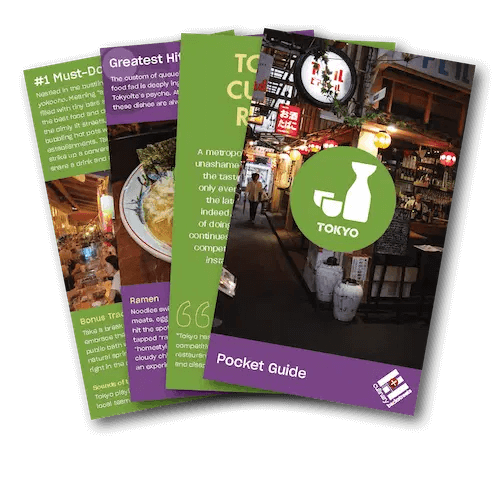
Get Your Free Tokyo Pocket Guide
Introducing our pocket-sized Tokyo guide — perfect for your next culinary adventure. Yours free when you sign up for our newsletter.
Get Your Free Tokyo Pocket Guide
Introducing our pocket-sized Tokyo guide — perfect for your next culinary adventure. Yours free when you sign up for our newsletter.
Visual Dispatches from the Frontlines of Local Eating
Tokyo Videos
Your Questions, Answered
With its sheer sprawl and density, there’s very little you can’t do or see in Tokyo. It’s home to lovely gardens like Koishikawa Korakuen and Shinjuku Gyoen, world-class art museums like the Mori in Roppongi, delicious food around every corner and fantastic bars. Whether you’re interested in art, history, culture, cuisine or nature, the city has something for everyone. Plus, its comprehensive train network makes sightseeing around town a breeze – we love being able to bounce from old-school Yanaka to buzzy Shibuya to glitzy Ginza all in the space of a single day.
With thousands of restaurants and millions of discerning diners, Tokyo is an exceptional culinary destination – the world is at your fingertips (or mouth) in this city. We’d be hard-pressed to name just one best restaurant, as you could spend a lifetime eating your way across Tokyo. But we love the simple katsuo flakes on rice at Katsuo Shokudo for breakfast. Whether it’s soup curry or curry rice, curry for lunch is unbeatable. A pitstop at Hinatomaru makes a fine mid-afternoon sushi snack, and there are few better cities than Tokyo for grazing on food and sake all night long.
When compared to many coastal cities in the US, Tokyo is less expensive than most travelers might think, especially with the present favorable exchange rate. On average, eating out in Tokyo is less expensive than say, New York or LA. Your mileage will vary depending on what you choose to eat or do. A cup of coffee from the convenience store starts at less than $1, a basic beer just under $4 and a sit-down dinner at a mid-range izakaya can run about $15-30 before drinks. While fares vary by the train line used, public transportation is generally affordable, especially if you use all-you-can-ride day passes on the subway or trains. Taxis are not cheap – a 5km ride can run you about $15 depending on traffic.
Where you should stay depends on the kind of travel experience you enjoy. First-timers will do well in Shinjuku or Shibuya: both are lively and centrally-located, with excellent access to public transportation and proximity to department stores, restaurants, bars and nightlife. Ginza and the Tokyo Station area are excellent for high-end dining and shopping. For those who have been to Tokyo before, staying in neighborhoods outside the central Yamanote Line, such as Nakano or Shimokitazawa, are good options for an alternative look into local city life.
While there are no beaches really worth visiting in Tokyo proper, there are a few beaches along the coast located within a 1-2 hour train ride in neighboring prefectures such as Kanagawa and Chiba. Yuigahama Beach in Kamakura is popular with Tokyoites for water sports, and is accessible by public transport with an hour’s journey central Tokyo. Further along the coast is Southern Beach Chigasaki, which has a view of Mt. Fuji on clear days. Getting there takes about an hour by direct train from Tokyo, and then a 20-minute walk from the station.
Tokyo is located in the center of the Japanese archipelago, on the Pacific Coastal side of the main island. Formerly known as Edo prior to the 20th century, it has been the political and economic heart of the country since the 1600s, and has an urban economy to match – the largest in the world measured by GDP. Home to over 37 million residents, Tokyo is Japan’s most-populated city, and certainly one of the most populous in the world. Indeed, it is often synonymous with urban density in many people’s minds. As a well-serviced transport hub, Tokyo also makes an excellent base for day trips to the greater Kanto region and journeys to other prefectures further out.
Tokyo is an excellent city to visit during most months, except for the summer months of July to early September, as Tokyo summers are exceptionally hot and humid. While shaved ice may offer a happy respite from the heat, it is only temporary. April and November are popular with tourists because of the cherry blossoms and fall foliage respectively, but we’d recommend visiting during winter, from December to February, as Tokyo winters are mild and crowds are more manageable during these times.
Tokyo’s vaccination rate is at about 77%, with 55% having received a third booster shot. Social distancing guidelines are not always followed, but masking is widely practiced, and is par for the course almost everywhere. Most establishments insist on masks as a condition of entry. Over 90% of people wear masks indoors and outdoors, except when eating or drinking. It is less common to see masks in green spaces like parks. Tourists should be respectful and be prepared to follow masking guidelines.
You can fly directly to Tokyo from many locations worldwide, either into Haneda International Airport (HND) or Narita International Airport (NRT). Haneda is the newer of the two and more conveniently located, and it takes less than 30 minutes by train or monorail to reach central Tokyo. If you are landing at Narita, the JR Narita Express (NEX) is the most expedient route into the city, and takes roughly an hour.
Like most places with four seasons, the climate in Tokyo is pleasant in spring and autumn, when it’s comfortably cool or warm by turns. The rainy season, which traditionally begins in June, is muggy and wet; the summer months of July, August and early September are hot and unpleasantly humid, with temperatures typically in the mid- to high 90s F. Tokyo winters are comparatively mild, with clear skies. Temperatures rarely fall below 32 F, and apart from the rare event, snow is minimal to non-existent. Summer heat begins to ease off in late September, but this is also when typhoon season usually starts. Through October, this usually manifests in heavy rain and some wind in Tokyo, so it’s best to come prepared with waterproof shoes, umbrellas and a raincoat.
For a city of its size and urban density, Tokyo is very safe. Violent crime is very rare, petty crime such as pickpocketing is virtually unheard of, and people routinely leave items like phones or laptops at their cafe tables for a restroom break without worrying about them being stolen. Japanese people are famously hospitable and helpful, particularly towards tourists. While Tokyo is also generally very safe for solo women travelers, we would encourage similar levels of vigilance and safety guidelines as you’d observe somewhere else, particularly in crowded trains at peak commuting hours.
American citizens can travel from the United States to Japan visa-free for up to 90-days, with proof of vaccination.
A good day might begin with a leisurely breakfast of sushi and street snacks at the outer part of Tsukiji Market. Wander westwards into Ginza to experience the inimitable depachika (basement food halls), and then even further northwest for the Imperial Palace Gardens. From there, you could head further north by train into Akihabara – Tokyo’s geek mecca – and onward into Ueno, where you’ll find market street Ameyoko-cho and a handful of excellent museums.
Almost all major cuisines are represented in Tokyo, and there’s a restaurant for every palate and budget. The city has very little street food, but more than makes up for that with fantastic izakaya, standing bars, sit-down restaurants, counter seat-only diners and more. Vegetarians and vegans are far better catered for now than they were a decade ago, too. High-end sushi is on most travel bucket lists, but other dishes not to be missed include ramen (too many types to list), tempura, tonkatsu, soba, yoshoku (Japanese-style Western food) and gyudon (beef rice bowls).
The answer to this is a resounding “yes.” As the Netflix TV show “Old Enough” makes clear, Japan is overall a very safe place for children, and despite the crowds, Tokyo isn’t so different. It’s not unusual to see young children out and about unaccompanied by adults. Most train stations have excellent elevator access for parents with strollers. Many parents in Tokyo even cycle with up to two toddlers – one in front, and one at the back. Parents should note that fine dining restaurants and izakaya in particular are not very child-friendly, however, and many small counter-only establishments may not cater to children at all (some require a minimum of one order per customer, for example). However, there are many family-friendly restaurants in the city, and we recommend making a note of some before traveling. Restaurants in department stores and large chain “family” restaurants are usually safe bets. Most neighborhoods are generally safe for children, although families may wish to avoid staying in nightlife-heavy areas like Shibuya or Roppongi.



